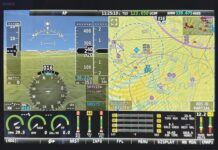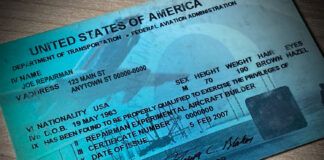The first news from the US. Sport Aviation Expo in Sebring is that Garmin has expanded the G3X EFIS capabilities with EIS (engine monitoring) and a dedicated autopilot module. According to Garmin, The EIS and autopilot are designed specifically for the G3X and are an affordable way for experimental and light sport aircraft (LSA) pilots to bring Garmin integration and quality into their cockpit. The sensor kits are expected to be available for all popular Lycoming, Continental, Rotax, and Jabiru engines in February 2010.According to Garmin, The added EIS software capability is expected to be available in February to all current G3X customers through a free software download. The G3X EIS software allows user customization of engine gauges, color bands, and audible/visual alerts, and supports the following sensor types: RPM Manifold pressure Oil temperature and pressure Coolant temperature and pressure Fuel pressure Up to six cylinder head temperature (CHT) inputs Up to six exhaust gas temperature (EGT) inputs Dual turbine inlet temperature Carburetor temperature Dual voltage inputs Dual current measurements (shunt or Hall effect) Fuel flow (single or differential) Trim position (three-axis) Flap position Up to four discrete (contact closure) inputs Up to four resistive fuel quantity inputs Up to two capacitive fuel quantity inputs. In addition, Garmin has announced a link-up with TruTrak Flight Systems to provide a dedicated external autopilot that will work directly with the G3X. It will get G1000-like features…customers who select the TruTrak GX Pilot autopilot, which has been designed to integrate seamlessly with the G3X, will enjoy advanced autopilot features that can be operated right from the PFD. Using controls and status indications derived from Garmins certified GFC 700, the G3X autopilot interface implements sophisticated flight control modes including altitude preselect and capture, heading hold, GPS navigation with turn anticipation, and coupled VNAV descents.KITPLANES editor in chief, Marc Cook, has been flying with the G3X suite since last summer, and has tested some of the new software. Heres a sneak peek of the update story that will appear in the April issue of KITPLANES:In many ways, the G3X system resembles the G1000, only simplified. It relies on individual screen modules, called GDU (shorthand, display units) that are linked to the rest of your avionics system with serial connections, both RS-232 (three on each GDU and three on the GSU, or service unit) and ARINC 429 (four on the GSU). Note that the G3X will not support old-school analog connections to nav/coms. Each GDU is linked to a multipurpose module called a GSU 37 through a CAN bus system-a three-wire versatile network. If the GDU is the face of the system, the GSU is the brain. Inside this 3.5-pound aluminum cube resides the primary ADAHRS unit. The solid-state gyros are rated for 360 of pitch and bank maneuverability at a maximum rotational rate of approximately 200/second. Pitot-static measuring sensors are there, too, though the magnetic sensor (magnetometer) is located remotely, as is the outside-air-temp probe. As the system is currently configured, there are provisions for only one GSU at a time. This follows common practice among the G1000 installations, where single-engine aircraft typically have one set of ADAHRS sensors and rely on other means such as electronic or pneumatic flight instruments for backup. That the components inside the GSU and the software running them are, if not exactly like the certified systems, very close to certified spec should help bolster confidence. Whats more, in my testing of the G3X starting in the summer of 2009, the basic attitude/pitot-static performance has been absolutely rock-solid reliable. Not a glitch, not a hitch…nothing.While the G3X is underpinned by one GSU module, it can support up to three display units. In fact, when I asked the systems designers about the G3Xs early development it became clear that they felt the minimum system really should have two screens. This philosophy closely shadows G1000/G600 concepts where a main screen (the primary flight display, or PFD) always carries the important attitude information including a horizontal situation indicator (HSI) in the lower part of the screen. The G3X’s basic presentation is absolutely top notch. Sometimes its the little things, like the shape of the vertical-speed arrow or the thickness of the magenta line that follows the VSI up or down from zero. The heading and altitude bugs are big and bold. The overall operating logic is quite sound. Having multiple single-function keys along the right side of the display, backed up by five soft keys at the bottom, helps reduce the number of times you push a button or turn a knob to get what you want.Garmin fully expects the G3X to add more features as it matures. The autopilot additions are next, to be followed by the full engine monitoring package. All the company needs to establish is the cost for the sensor pack, which will all be hooked in through the GSU module. (If you’re thinking of having the G3X do your engine monitoring, carefully consider where you’ll put the GSU to reduce the length of the many engine-related wires.) Synthetic vision should not be ruled out, and gaining some form of ADS-B connectivity should be assumed; right now, the G3X will accept TIS traffic data from a GTX 330 transponder (and offers altitude encoding to any serial-capable transponder). Currently, a single-screen system (with the GSU box, magnetometer and OAT probe) starts at $9995; add XM to that and its $10,695. A true dual-screen system is $14,995, and any additional display units run $3295. Garmin has not yet set a price on the engine-probe package, but its likely to be around $1000 including fuel flow. Garmins management knows the G3X arrives near the top of this market segment, but is betting that the company’s experience and reputation will carry the day. So far, from a hardware and software standpoint, the G3X has more than met expectations.For more information, visit the G3X page on Garmin.com or the G3X Minisite.
In Case You Missed It
Build It Better: The Choices We Make
Paul Dye debuts his new series on the myriad considerations that go into building and flying Experimental aircraft.
The Repairman Certificate
Those of us who have built or are building Experimental/Amateur-Built aircraft know that one...
Radical Reconstruction
There are no halfway measures to describe what has transpired at Glasair Aviation from...
Roll Your Own
Builders Ken Scott and Ken Kruegers unique project is off the drawing board and into production. They're working with the engine builder, the wing is behind them, the nosebowl is taking shape-and the fuselage is taking over the living room;













